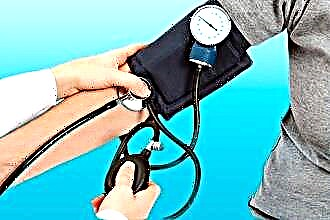Not in all cases, sinusitis (an inflammatory process in the paranasal sinuses) is a consequence of hypothermia or the penetration of pathogenic microbes into the body with the air. Patients who have unhealthy teeth in the lower or upper jaw often suffer from a disease similar to common sinusitis. This is odontogenic maxillary sinusitis. Such a pathology, although it is similar in many respects to sinusitis, still differs from it in a number of characteristic features. Odontogenic sinusitis is treated in the same way as other types of sinusitis.
Specificity and causes of the onset of the disease
 Chronic odontogenic sinusitis is an inflammation of the mucous membrane, as well as the submucosal space of the maxillary paranasal sinuses. The first symptoms appear after sinus infection from a diseased tooth. Experience shows that in most cases, the development of odontogenic sinusitis is associated with some diseases of the posterior upper teeth. This is due to the anatomical features of this area. The fact is that premolars and molars (posterior teeth) are located very close to the maxillary sinuses and often serve as a source of infection.
Chronic odontogenic sinusitis is an inflammation of the mucous membrane, as well as the submucosal space of the maxillary paranasal sinuses. The first symptoms appear after sinus infection from a diseased tooth. Experience shows that in most cases, the development of odontogenic sinusitis is associated with some diseases of the posterior upper teeth. This is due to the anatomical features of this area. The fact is that premolars and molars (posterior teeth) are located very close to the maxillary sinuses and often serve as a source of infection.
Most often, odontogenic sinusitis affects only one cavity on the left or right, depending on the location of the diseased teeth. But the inflammatory process can also spread to a healthy sinus. If the patient's immunity is weakened, pathogenic bacteria create extensive foci of infection in other sinuses - frontal, sphenoid, and so on. Oral microbes act as causative agents of odontogenic sinusitis:
- enterococci;
- diplococci;
- streptococci;
- staphylococci;
- sticks.
Clinical practice indicates that the disease is usually caused by a mixed microflora, that is, several pathogens at the same time.
So, we have established that the infection gets from the tooth into the maxillary sinus. But why then do not all people with affected teeth develop such an ailment? This pathology is diagnosed only in those who have a predisposition or high sensitivity of the upper layer of maxillary sinuses to pathogenic microbes.
In addition, dental sinusitis develops faster in the body with reduced immunity.
In what cases can dental odontogenic sinusitis appear? The following situations are conducive to this:
 severe caries of the upper posterior teeth;
severe caries of the upper posterior teeth;- suppuration of the tooth cyst;
- periodontal disease with subsequent destruction of the bone;
- perforation of the sinus wall during tooth extraction;
- osteomyelitis (suppuration of soft tissues);
- periodontitis (inflammation of the tissues around the tooth root);
- incorrect placement of implants and so on.
Certain somatic diseases increase the risk of disease, which reduce the body's resistance. Also at risk are people with an excessively close location of the dental roots to the maxillary sinuses.
Clinical manifestations
When odontogenic sinusitis occurs, the patient may feel pain in the area where the alveolar process is located. This is the result of the inflammatory process. It develops as a result of the progression of caries or gum inflammation in the tooth after visiting the dental office.
At the initial stage of the disease, the pathogenic microflora gradually affects the maxillary sinus, creating an infectious focus in it. Against the background of an increase in the intensity of inflammation, severe swelling of the sinus mucosa appears. The opening that connects the sinus to the nasal cavity is narrowed. This stops the natural ventilation of the sinus. It actively accumulates nasal secretion, which creates favorable conditions for the development of pathogenic bacteria, and then - and purulent foci.
Acute odontogenic sinusitis, the symptoms of which are difficult to confuse with signs of another disease, manifests itself as follows:
 There is severe nasal congestion, which does not go away even after using drugs to narrow the blood vessels (and if it does, then for a short time).
There is severe nasal congestion, which does not go away even after using drugs to narrow the blood vessels (and if it does, then for a short time).- It annoys discomfort and unpleasant bursting sensations in the paranasal sinus area.
- Due to swelling of the mucous membrane, the patient is not able to breathe normally through the nose.
- The temperature rises to febrile values and often reaches 40 degrees.
- The patient suffers from attacks of severe headaches radiating to the ear, eye or cheekbone.
- Against the background of intoxication caused by the waste products of bacteria, chills, body aches, stiffness in muscles and joints appear.
- When palpating (feeling) the gums near the infected tooth, the patient feels a piercing pain.
- Photophobia and lacrimation are common.
If the patient does not timely consult a doctor who does not eliminate the root cause of such an ailment (a bad tooth), the pathology is transformed into a chronic form. Its symptoms are mild: there is poor health, fatigue, fatigue, pain in the affected tooth. Often there is purulent discharge from the nose. The sense of smell deteriorates many times, or even disappears altogether.
Exacerbation of the chronic form of odontogenic sinusitis can provoke even minor hypothermia, influenza, SARS and some other seasonal diseases.
Therapy
It is impossible to limit treatment by eliminating the infection in the maxillary sinus alone. It is necessary to pay attention to the sanitation (improvement) of the oral cavity. Otherwise, germs from diseased teeth will from time to time penetrate into the paranasal sinuses. And this is a direct path to the transition of an acute form of sinusitis into a chronic one. Therefore, doctors recommend that a patient with such a diagnosis immediately go to the dentist for a complete cure of all affected teeth.
Only at the final stage of oral cavity sanitation should one proceed directly to the therapy of sinusitis itself. Treatment involves the following measures:
 If a patient seeks medical help at the time of a pronounced severity of symptoms and with profuse purulent discharge, a puncture is indispensable. We are talking about a puncture of the maxillary sinus, followed by pumping out pus and rinsing the cavity for 3-6 days using disinfectants.
If a patient seeks medical help at the time of a pronounced severity of symptoms and with profuse purulent discharge, a puncture is indispensable. We are talking about a puncture of the maxillary sinus, followed by pumping out pus and rinsing the cavity for 3-6 days using disinfectants.- To be able to completely get rid of odontogenic sinusitis, antibacterial drugs should be taken. They are selected by the attending physician after laboratory analysis of mucus to determine the sensitivity of pathogenic microflora to one or another active substance of the antibiotic.
- To relieve the swelling of the mucous membrane, antihistamines are prescribed. The most effective are Diazolin, Suprastin and Loratadin.
- In addition, treatment involves flushing the sinuses with a sinus catheter. Two thin tubes are inserted into the patient in both nostrils. One by one, an antiseptic solution is supplied, and through the other, the pus accumulated in it is pumped out of the sinus.
- In order to facilitate nasal breathing, various drugs are prescribed for vasoconstriction. They are used carefully and only under the control of an ENT, so as not to overdry the mucous membrane.
- Antiseptic and antibacterial nasal drops are also used. The nasal passages are irrigated with the following aerosols and sprays: Miramistin, Isofra, Bioparox and the like.
- After the intensity of the inflammatory process has been reduced, the doctor attributes physiotherapy procedures. They are selected individually for each patient, depending on the severity of the disease and its individual characteristics (usually the course does not exceed 10 procedures).We are talking about laser irradiation, UHF, magnetic therapy. These funds do not allow sinusitis to transform into a chronic form.
Preventive measures
 To be completely healthy and confident in the normal state of the maxillary sinuses, it is necessary to constantly observe oral hygiene - to treat diseased gums and teeth in a timely manner. We recommend visiting the dentist's office at least once every 6 months. It is better to give preference to a proven and qualified specialist with extensive experience.
To be completely healthy and confident in the normal state of the maxillary sinuses, it is necessary to constantly observe oral hygiene - to treat diseased gums and teeth in a timely manner. We recommend visiting the dentist's office at least once every 6 months. It is better to give preference to a proven and qualified specialist with extensive experience.
If possible, mechanical tooth extraction should be abandoned. Such an operation often becomes the main reason for the development of odontogenic sinusitis. In addition, it negatively affects the chewing ability of the jaw.
Try not to visit crowded places during periods of influenza and SARS epidemics. Do not forget to periodically drink immunomodulating drugs and vitamins to enhance the protective functions of the body. Do not interrupt your medication at the first sign of improvement. Always fully treat upper respiratory tract infections. Eat natural foods, walk more, lead a healthy lifestyle, and you can prevent various ailments.

 severe caries of the upper posterior teeth;
severe caries of the upper posterior teeth; There is severe nasal congestion, which does not go away even after using drugs to narrow the blood vessels (and if it does, then for a short time).
There is severe nasal congestion, which does not go away even after using drugs to narrow the blood vessels (and if it does, then for a short time). If a patient seeks medical help at the time of a pronounced severity of symptoms and with profuse purulent discharge, a puncture is indispensable. We are talking about a puncture of the maxillary sinus, followed by pumping out pus and rinsing the cavity for 3-6 days using disinfectants.
If a patient seeks medical help at the time of a pronounced severity of symptoms and with profuse purulent discharge, a puncture is indispensable. We are talking about a puncture of the maxillary sinus, followed by pumping out pus and rinsing the cavity for 3-6 days using disinfectants.

